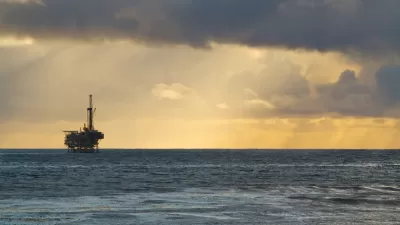Mark Hertsgaard examines the effort undertaken by BP to cover up the 2010 Gulf of Mexico oil spill. The focus of his story is the company's use of Corexit, a dangerous 'dispersant' that sickened many and helped conceal the true extent of the spill.

For 87 agonizing days during the spring and summer of 2010, “the worst environmental disaster in American history” released torrents of Louisiana sweet crude from the Macondo well into the Gulf of Mexico. "Yet three years later, the BP disaster has been largely forgotten, both overseas and in the U.S.," says Hertsgaard. "Popular anger has cooled. The media have moved on."
"Such collective amnesia may seem surprising, but there may be a good explanation for it: BP mounted a cover-up that concealed the full extent of its crimes from public view. This cover-up prevented the media and therefore the public from knowing—and above all, seeing—just how much oil was gushing into the gulf. The disaster appeared much less extensive and destructive than it actually was."
Hertsgaard focuses on BP's use of Corexit, the “dispersant” substance used to break up the oil, which is thought to have sickened hundreds of cleanup workers and local residents, damaged gulf wildlife and ecosystems, and helped conceal the true extent of the disaster.
FULL STORY: What BP Doesn’t Want You to Know About the 2010 Gulf Spill

Alabama: Trump Terminates Settlements for Black Communities Harmed By Raw Sewage
Trump deemed the landmark civil rights agreement “illegal DEI and environmental justice policy.”

Planetizen Federal Action Tracker
A weekly monitor of how Trump’s orders and actions are impacting planners and planning in America.

The 120 Year Old Tiny Home Villages That Sheltered San Francisco’s Earthquake Refugees
More than a century ago, San Francisco mobilized to house thousands of residents displaced by the 1906 earthquake. Could their strategy offer a model for the present?

Ken Jennings Launches Transit Web Series
The Jeopardy champ wants you to ride public transit.

BLM To Rescind Public Lands Rule
The change will downgrade conservation, once again putting federal land at risk for mining and other extractive uses.

Indy Neighborhood Group Builds Temporary Multi-Use Path
Community members, aided in part by funding from the city, repurposed a vehicle lane to create a protected bike and pedestrian path for the summer season.
Urban Design for Planners 1: Software Tools
This six-course series explores essential urban design concepts using open source software and equips planners with the tools they need to participate fully in the urban design process.
Planning for Universal Design
Learn the tools for implementing Universal Design in planning regulations.
Clanton & Associates, Inc.
Jessamine County Fiscal Court
Institute for Housing and Urban Development Studies (IHS)
City of Grandview
Harvard GSD Executive Education
Toledo-Lucas County Plan Commissions
Salt Lake City
NYU Wagner Graduate School of Public Service




























